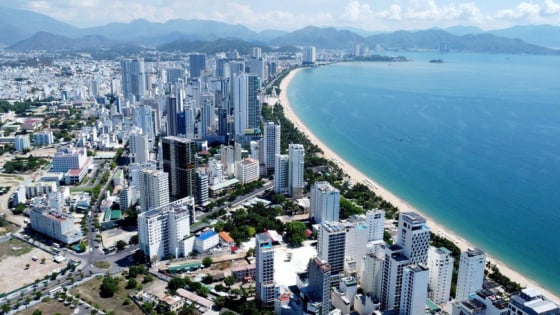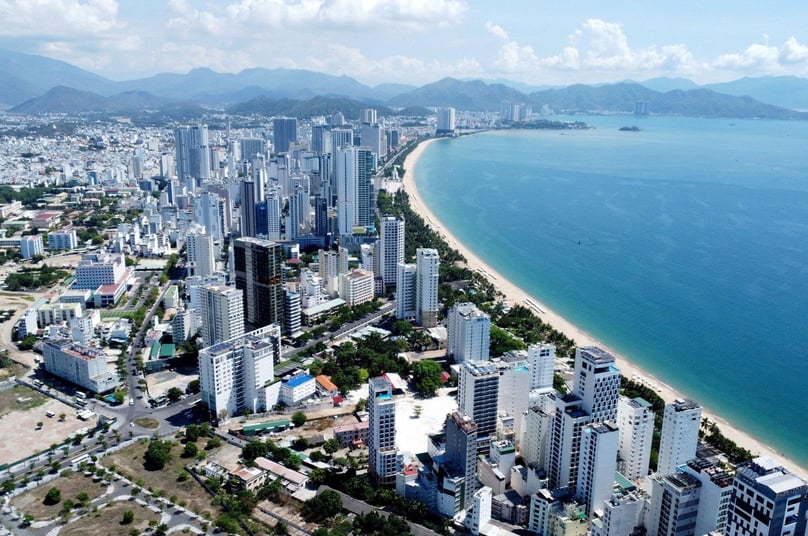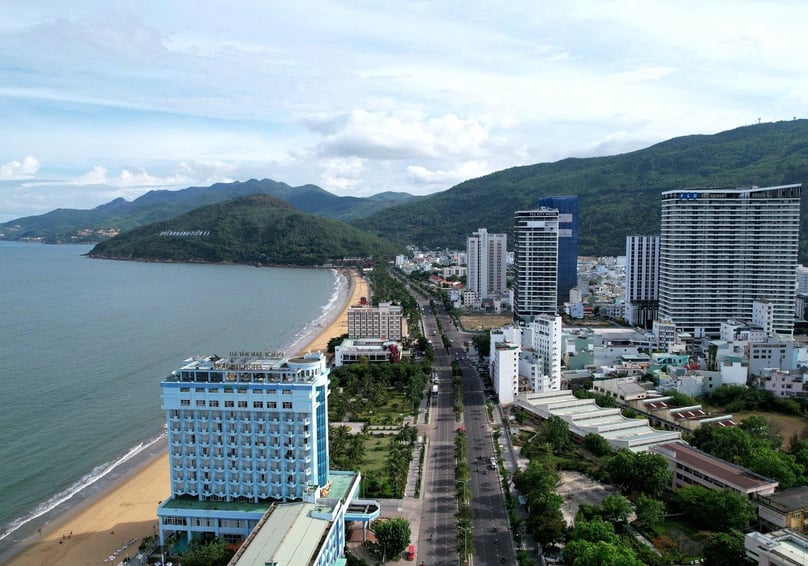
By Nguyen Tri, Minh Hue
Sat, July 12, 2025 | 11:00 am GMT+7
The merging of Vietnamese localities is expected to create a strong “boost” for the real estate market as expanded planning space, synchronized infrastructure, and new land reserves are key factors driving the market’s transformation.

A corner of new Khanh Hoa province, central Vietnam. Photo by The Investor/Bui Hoang.
A post-merger boost
According to assessments, the merger of Khanh Hoa and Ninh Thuan provinces to establish the new Khanh Hoa province from July 1 offers significant opportunities for the local property market. The new Khanh Hoa borders Dak Lak, Lam Dong, and the East Sea.
Statistics from former Khanh Hoa’s Department of Construction show that in the first half of 2025, the province recorded nearly 16,200 real estate transactions, with over 9,200 in Q2 alone, a 32% increase from Q1.
Specifically, apartment transactions totaled 1,210; land plot transactions reached 4,196; and individual house sales numbered 3,796. The total transaction value was approximately VND11.7 trillion ($448 million).
Despite no new real estate projects eligible for launch in Q2, transaction volume still surged, reflecting high market demand, according to the department.
Notably, the merger was considered a major factor contributing to the sharp increase in real estate transactions in Q2, particularly in land and apartment segments, it noted.
Moreover, although the number of land transactions slightly declined, total transaction value jumped by 274% compared to Q1. This indicated a market shift from speculative, small-scale trades toward high-value land plots with complete legal documentation, it added.
“In the second half of 2025, suburban land plots and central townhouses will likely be standout segments. Additionally, the merger with Ninh Thuan will open up new opportunities for the market, especially in tourism and resort real estate,” said Nguyen Anh Tuan, vice chairman of the Khanh Hoa Real Estate Brokers Association.

A corner of new Gia Lai province, central Vietnam. Photo by The Investor/Tin Phan.
Similarly, after the merger of Gia Lai and Binh Dinh provinces, the new Gia Lai, endowed with both mountains and coastline, shows greater potential in resort, industrial, logistics, and large-scale urban real estate development. The new Gia Lai borders Dak Lak, Quang Ngai, Cambodia, and the East Sea.
Ho Quoc Dung, Party chief of Gia Lai, stated that the locality has identified five strategic pillars, aimed at maximizing its distinctive advantages and overcoming current bottlenecks.
For ecological, luxury resort, and cultural-historical heritage tourism, Gia Lai will focus on leveraging the combined value of sea, forest, and highlands. The province also plans to enhance inter-regional and international tourism links, especially within the Vietnam-Laos-Cambodia development triangle.
Gia Lai will also develop two strategic growth poles: the Quy Nhon area and the Pleiku area, acting as the driving hubs for regional development.
“The province is prioritizing investment in key transportation routes, such as the Quy Nhon-Pleiku Expressway; developing and expanding roads connecting former Binh Dinh and Gia Lai; upgrading routes linking seaports and international border gates; and exploring the possibility of a railway connecting Quy Nhon Port with the Central Highlands,” Dung added.
Caution advised amid rising land prices
According to Nguyen Anh Tuan, vice chairman of the Khanh Hoa Real Estate Brokers Association, although housing demand is very high, particularly from officials relocating from Ninh Thuan and a growing number of Hanoi residents settling in the area, ready-to-live-in properties remain scarce. This has led to price increases of 10-25% compared to the same period last year.
Furthermore, new supply is still limited, especially in the apartment and urban housing segments, so the market is currently dominated by land plots and standalone houses. “The market is going through a phase of selective recovery, with investor sentiment stabilizing and leaning toward medium- to long-term growth,” he commented.
Meanwhile, Vo Hong Thang, chief investment officer at property consultancy firm DKRA Group, noted that despite its advantages, the new Gia Lai province must still address transportation challenges in mountainous areas, where road connectivity faces significant obstacles.
He also pointed out competitive pressures from other merged provinces like Khanh Hoa (with Ninh Thuan) or Lam Dong (with Dak Nong and Binh Thuan), which similarly benefit from coastal and mountainous terrains. These factors must be carefully considered.
Thang added that since the merger announcement, the real estate market in Quy Nhon, designated as the new administrative center of Gia Lai, has seen some price and liquidity movements.
However, he warned that buyers should avoid herd mentality when investing, as post-merger transitions may involve zoning changes, land-use conversion, and potential land ownership disputes, posing unnecessary risks.
“Buyers should actively follow market developments and prioritize properties with proper land titles or thoroughly vet project legalities and the developer’s credibility before investing,” Thang advised.






